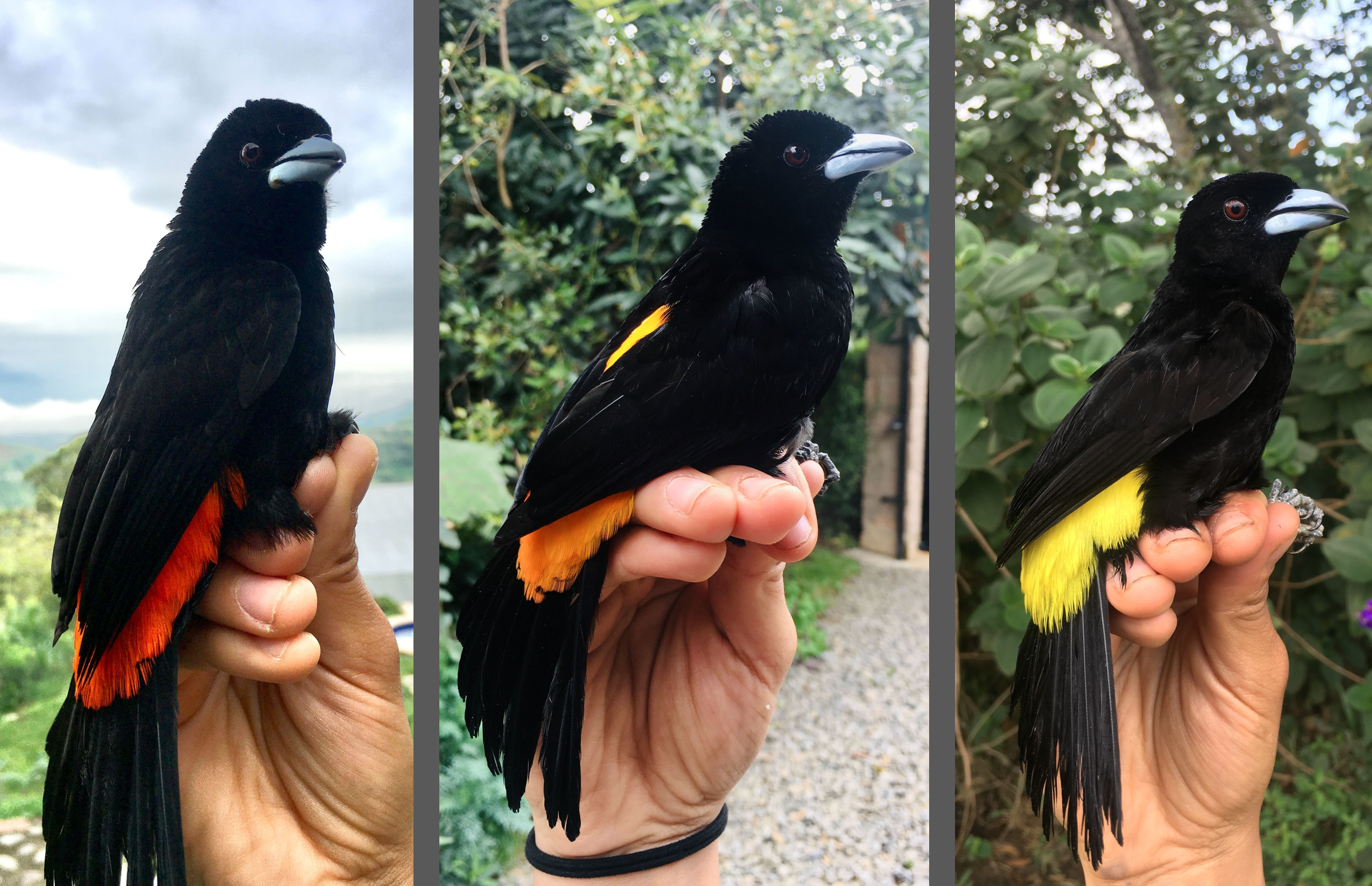
| |
| Home |
| Research |
| Publications |
| People |
| Teaching |
| Field Course |
| Conservation |
| Outreach |
| Adventures |
| Opportunities for students |
| Contact |
RESEARCH PROGRAM |
| PARALLEL HYBRID ZONES IN RAMPHOCELUS TANAGERS |
After populations differentiate in isolation, incipient species can come into secondary contact and form hybrid zones. These hybrid zones provide a window to explore how reproductive barriers act to maintain species boundaries. Two subspecies of the lemon-rumped/flame-rumped tanager Ramphocelus flamigerus ssp. have diverged in isolation, but overlap and hybridize extensively at multiple hybrid zones in the Andes of Colombia. The lemon-rumped subspiecis (R. f. icteronotus) is found at low elevations along the Pacific Coast from southern Peru through Costa Rica, while the flame-rumped subspecies (R. f. flammigerus) is endemic to Colombia, found at mid-elevations along the slopes of the Cauca River Valley in the Western Andes. We are sampling three hybrid zones to understand how genomic divergence is maintained at secondary contact, testing if the outcomes of breeding interactions between young species are repeatable and predictable. This work is María Castaño’s dissertation project, and a collaboration with Carlos Daniel Cadena from Universidad de los Andes. |

| Variation in rump color among males of the lemon-rumped tanager Left to right are: falme-rumped male, a hybrid with orange rump, and a lemon-rumped male. Photos by María Castaño. |
| Back to Current Research Page |
| Back to Uy Lab Home |
|